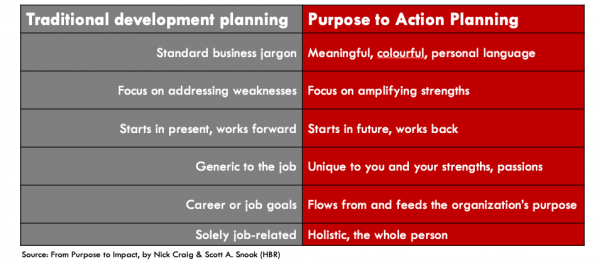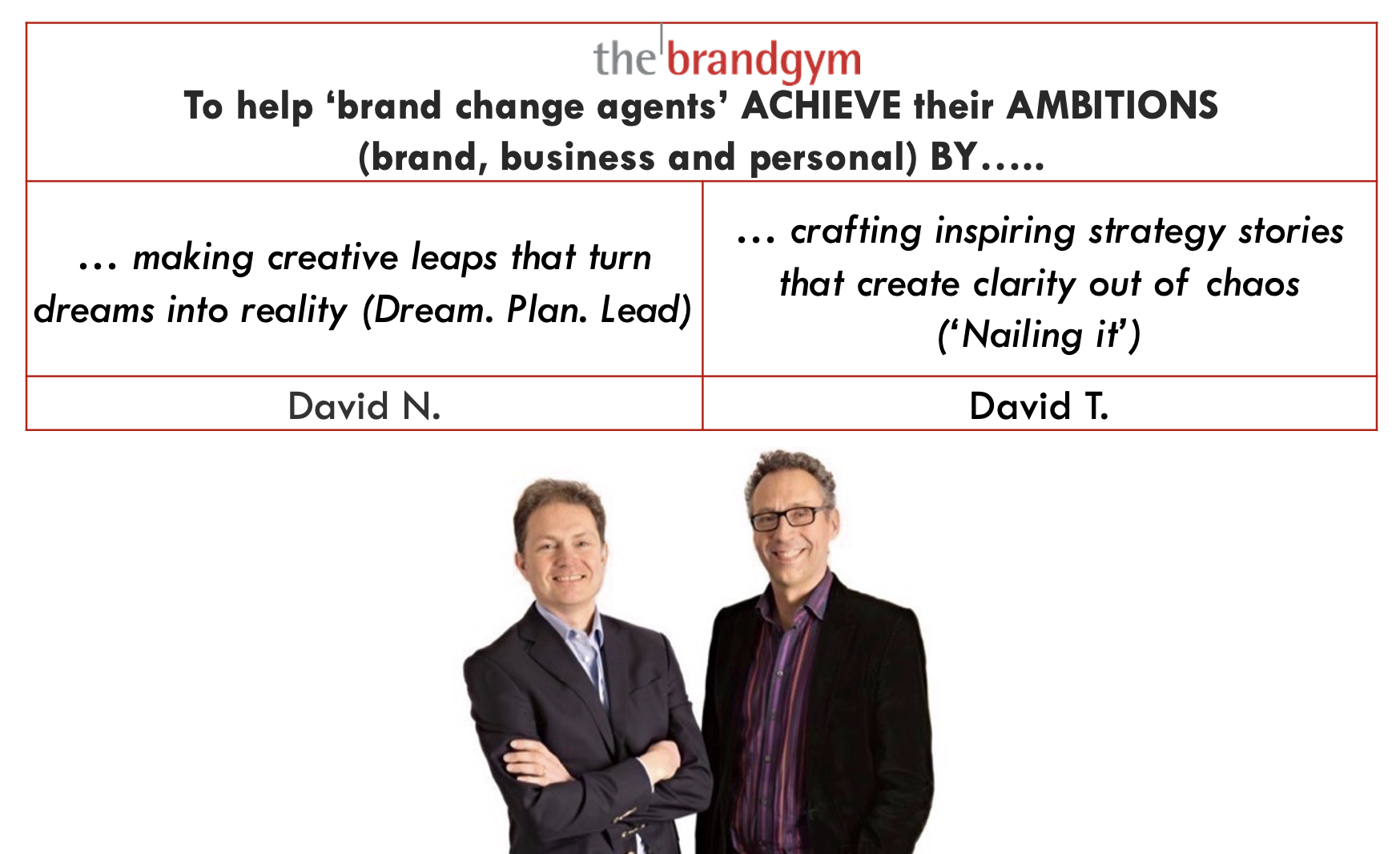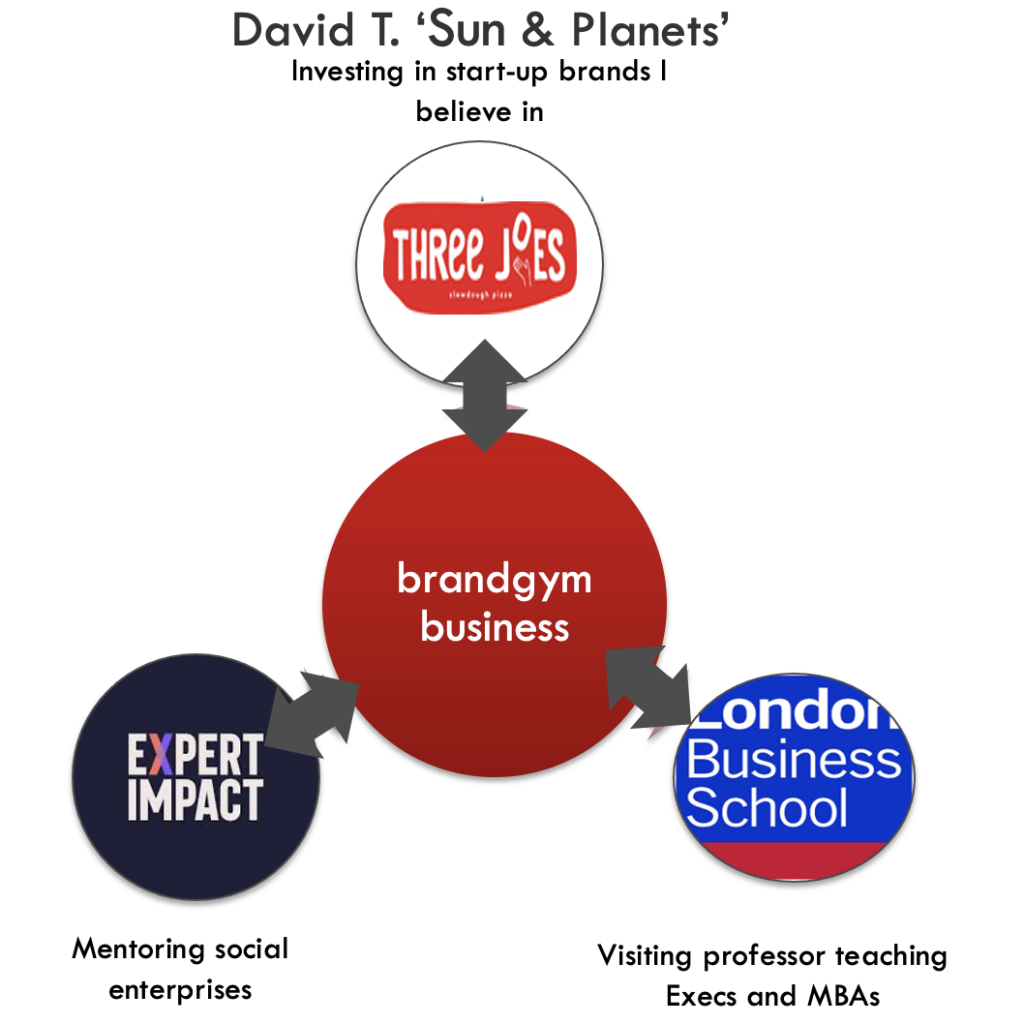Linking company purpose and personal purpose
Personal brand purpose was one of the highlights of our recent global virtual brandgym partner retreat. In particular, we explored the power of translating your company brand purpose into a PERSONAL brand purpose.
Personal purpose is powerful stuff when done well, as I posted on last year. Doctors have found that “people with purpose in their lives are less prone to disease,” according to HBR (1). However, the same article revealed fact that less than 20% of leaders have a strong sense of their own personal purpose.
In this post, I look at three main topics. First, how to define your personal purpose. Second, how to ensure that your personal purpose flows from and reinforces the purpose of you company as a whole. And third, working on action plans that flow your personal brand purpose.
PURPOSE to ACTION PLANNING
The overall process we used at our brandgym retreat built on the HBR article I mentioned earlier. The exercises are designed to push you past the generic, useful suspect phrases. “Help people succeed”. “Drive brand growth”. Etc. You work on making your personal brand purpose as inspiring as possible (see table below). You do this by reflecting on your life story to identify major themes. These are related to strengths, values, and passions.

1. STARTING with COMPANY BRAND PURPOSE
The process of linking personal brand purpose and company brand purpose is iterative. We gave our parters the brandgym purpose as an idea starter:
To help ‘brand change agents’ achieve their ambitions (brand, business & personal)
We then gave people freedom to work on their personal brand purpose. Finally, we checked back that all the personal purposes flowed from and fed back to the company brand purpose.
2. PERSONAL BRAND PURPOSE exercises
’CRUCIBLE STORIES’
Think of times when you were stretched to your limits. These stories can be focussed on confronting a difficult situation at work or in your personal life. The story should have a beginning, middle and end. Look back and reflect on how these experiences shaped you and your attitude towards life.
In my case, a crucible story was co-founding the Paris office of marketing consultancy Added Value at a relatively young age of 29. I’d never worked in France, never been a marketing consultant and only had a working knowledge of French! I learnt the hard way how to open doors, pitch and then win projects, back in the days without email or mobile phones! It took months and months to get the first small project. And another few months to get the first big European project with Disneyland. This experience taught me the need for persistence, stamina and self-confidence.
PEAK PERFORMANCE STORIES
Think of two occasions when you were at your peak performance. Sports people often call this ‘flow’: times when you are in your ‘sweet spot’ and achieving amazing things without having to think or work too hard at it. With these stories in mind, list four to five of your greatest strengths..
In my case, both stories were about brand positioning workshops, one with WD-40 and one with Ab Inbev. In particular, the stories focused on the process of taking hundreds or even thousands of pages of business data plus fresh insight and a post-it storm of team ideas and then working to create an inspiring brand strategy ‘story’. I loved the process of taking something messy and finding patterns and clues. And then capturing and codifying the building blocks into a strategy that we then bring to life.
DRAFTING YOUR PERSONAL PURPOSE
Using the answers from the exercises as raw material, write down elements of your purpose. Start with a list of thoughts, impressions and truths. And then start to write a draft purpose statement. We found it really helpful at this stage to share the draft purpose and the stores that led to it with a partner for feedback.
My first stab at personal purpose was ‘To develop brand strategies that create clarity and inspiration’. This had the right elements, but lacked colour and distinctiveness. My partners pushed me to make it sharper and more distinctive. I captured the ideas of brand strategy as a ‘crafting’ process, the concept of storytelling (that I love doing in this blog and in the brandgym books) and finally the thrill of transforming messy, multiple sources of data into a clear picture. The refined purpose was much more inspiring: ‘To craft inspiring brand strategy stories that create clarity from chaos’.
3. CHECK BACK TO COMPANY BRAND PURPOSE
Once we had a set of inspiring personal purpose statements we then did the check-back with the company purpose. This proved to be really powerful. It showed us how our personal brand purposes complemented one another and delivered the company purpose in different ways.
You can see this by looking at my personal purpose and that of ‘the other David’: my brilliant business partner and friend David Nichols. Whereas I love creating clarity from chaos, David N’s personal purpose is all about making ‘creative leaps that turn dreams into reality‘. For example, he recently worked with the brandgym Create team he heads to develop a positioning for private equity firm Astorg and then turn this into a whole new corporate identity. But in both our cases, the personal purpose flows from and feeds back into the company brand purpose.
One simple trick is to write “By ….” at the end of the company brand purpose and then check that the personal brand purpose flows fluently from this.

4. PERSONAL PURPOSE-LED ACTION PLANS
The final, important step is to use your purpose to inspire and guide action plans. It helps to identify the ‘blockers’ that prevent you from fully living your purpose. And the strengths you’d like to leverage. We worked on broad goals and then five year and 12 month actions for each.
An example goal for me from last year’s retreat in Jan 2020 was to “Revamping, updated and expanding our brand strategy toolkit” with a 12 month action being to harness the power of digital technology. This clear goal and action plan linked to my personal purpose inspired me to design and launch our new brandgym Academy online training platform.
5. ‘SUN & PLANETS’
Another cool framework we used is called ‘sun & planets’. In the middle you put your main job, in my case working for the brandgym to craft inspiring brand strategy stories that create clarity from chaos. This is your core business, if you like. The three planets are then other activities that use your core core capabilities and feed back to them, enriching the core. For example, in my case (below) I love my pro-bono work mentoring social entrepreneurs on brand strategy, working with a brilliant organisation called Expert Impact. I get to use my strategy skills for a good cause. And the experience has taught me me a lot about how to make our brand strategy tools and frameworks effective for social enterprises. I also invest in start-up brands I believe in, such as the sourdough pizza restautant group, Three Joes.

In conclusion, we found working on personal purpose to be inspiring and energising and something worth doing, especially if you’re in the 80% of leaders that don’t have one! It is especially powerful when you work on linking company brand and personal brand purpose.
To explore BRAND PURPOSE in depth we offer a short, on-demand course on our brandgym Academy platform here. The course is only £95+VAT and is fully refunded if you go on to take the full brandgym Mastering Brand Growth program where we explore a comprehensive and practical 8-step program for creating brand strategy to inspire business growth.
To get our latest research paper Making Purpose Pay, just pop your email in the form below:
You can also check out the other posts on personal purpose below:
WD-40’s culture: a ‘M.A.P.’ for people & business growth
If money doesn’t DRIVE people, what does?!
Investing in ‘BRAND-YOU’ during these crazy times
Sources:


